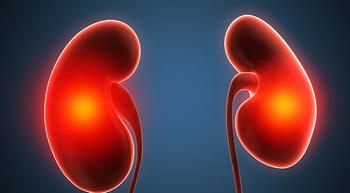
Biopsy Alone May Miss Risk in Grade Group 1 Prostate Cancer
Key Takeaways
- Grade group 1 prostate cancer assessment should include PSA, stage, and disease volume for accurate risk evaluation.
- Active surveillance is safe for most low-risk patients, but higher-risk features require closer monitoring.
Dr. Neal Patel says biopsy results may not fully capture prostate cancer risk, stressing that PSA, stage and disease volume should also guide treatment.
Biopsy results alone may not fully capture the risk of grade group 1 prostate cancer, which affects many men and can have varied long-term outcomes. Additional factors like PSA, stage, and disease volume are essential for accurate assessment, according to Dr. Neal Patel, urologic oncologist and assistant professor of urology at Weill Cornell Medicine.
Active surveillance is safe for most men with low-risk disease, but patients with higher-risk features may need closer monitoring. Patel stressed the importance of reviewing the full clinical picture before deciding on treatment. This includes imaging, blood work and biopsy details.
What should patients understand about the limitations of biopsy-based diagnosis?
Whenever a patient has a biopsy, you're just picking a small sampling of the entire prostate. Whenever we think about cancer in general, people also look for independent markers that are prognostic of long-term outcomes. Biopsy alone might not fully predict prognosis. For that reason, we use things in combination, like PSA, stage or volume of disease, to better predict what the outcome is going to be.
For patients who have been told they have low-grade prostate cancer, what follow-up steps would you recommend ensuring their risk level is accurately assessed?
If you look at national guidelines like the NCCN guidelines or the American Urological Association guidelines, whenever a man is diagnosed with prostate cancer, it is recommended that they be risk stratified using some of the clinical parameters that we discussed, like PSA, stage and volume of disease. Biopsy grade, which is a Gleason grading, is just one component of that risk stratification. Usually, a urologist will look at the clinical features as well as the biopsy to help risk stratify a patient, and based on that, treatment recommendations are made.
Many patients are placed on active surveillance for this type of disease. Based on your findings, when might active surveillance not be the safest course of action?
We strongly believe that active surveillance is the correct treatment choice for the majority of men with grade group one prostate cancer, especially those with low risk. Most studies on active surveillance focus on men with low-risk, low-grade cancer and show it to be very safe. The population that is non–low risk, which our study focused on, has historically been excluded from active surveillance series because the cancer might not be as indolent as the biopsy suggests. The exact treatment option for these patients isn't well understood. There is not enough data to support whether they should be on active surveillance, but historically, they were not included because of concerns for a higher risk of progression.
There has been recent discussion around removing the cancer label from grade group 1 prostate cancer. Can you explain why your team believes that could potentially be misleading for patients?
There is good rationale to remove the cancer label because the majority of men with prostate cancer are low risk at diagnosis, and the preferred treatment option for many patients is active surveillance. Population-based data show that rates of active surveillance for low-risk, low-grade disease are still not 100%, and removing the cancer label could ideally increase the number of patients who avoid treatment. However, our study identified a subset of men with grade group 1 prostate cancer on biopsy who have adverse clinical features that might increase their risk of developing metastasis. Even though this is a smaller subset, this group needs further study before taking steps like dropping the cancer label.
How might your study help patients feel more informed when discussing treatment options with their care team?
Prostate cancer treatment decisions are very personalized and often based on multiple factors. Biopsy is just one factor. It is important to understand the whole picture of your diagnosis, including blood work, MRI or imaging results, and subtle details of the biopsy. No single clinical or pathological feature should guide your decision; a comprehensive overview is necessary to help determine the best treatment.
What are some key questions that patients should be aware of to ask their physicians if they're diagnosed with this type of prostate cancer?
One limitation of our study is that we couldn't account for the use of prostate MRI. Many think that if you have a prostate MRI and a targeted biopsy, grade group 1 diagnoses are more accurate and higher-grade cancers are not missed. MRI is not perfect and has its own limitations. Ensuring patients receive state-of-the-art imaging and are seen at a multidisciplinary center with urologists experienced in prostate cancer is very important.
Is there anything you want to add?
The purpose of this article is to shed light on a group of patients who are non–low risk and have not been well included in active surveillance series. Before taking steps like removing the cancer label, we need a better understanding of this subset of patients.
For more news on cancer updates, research and education,





